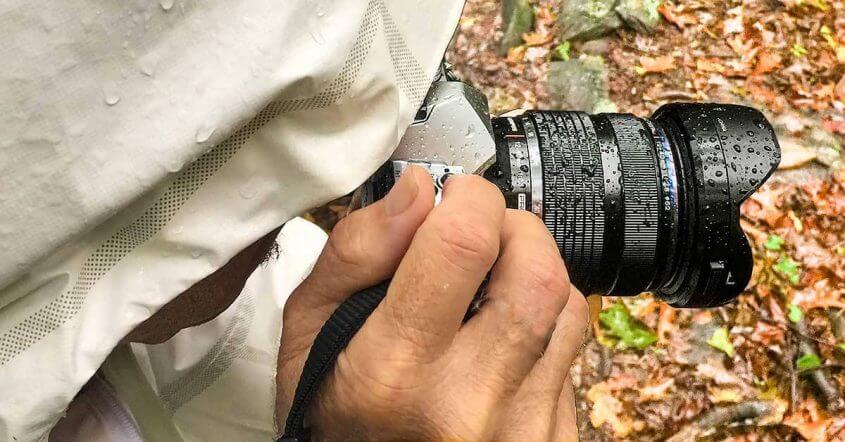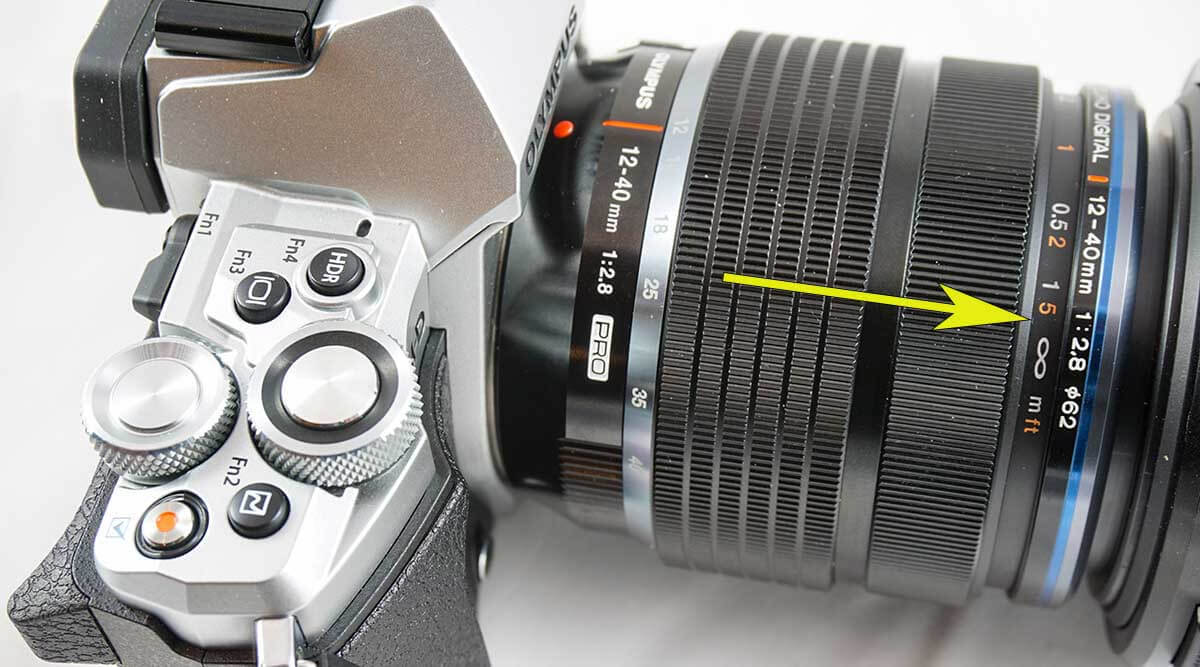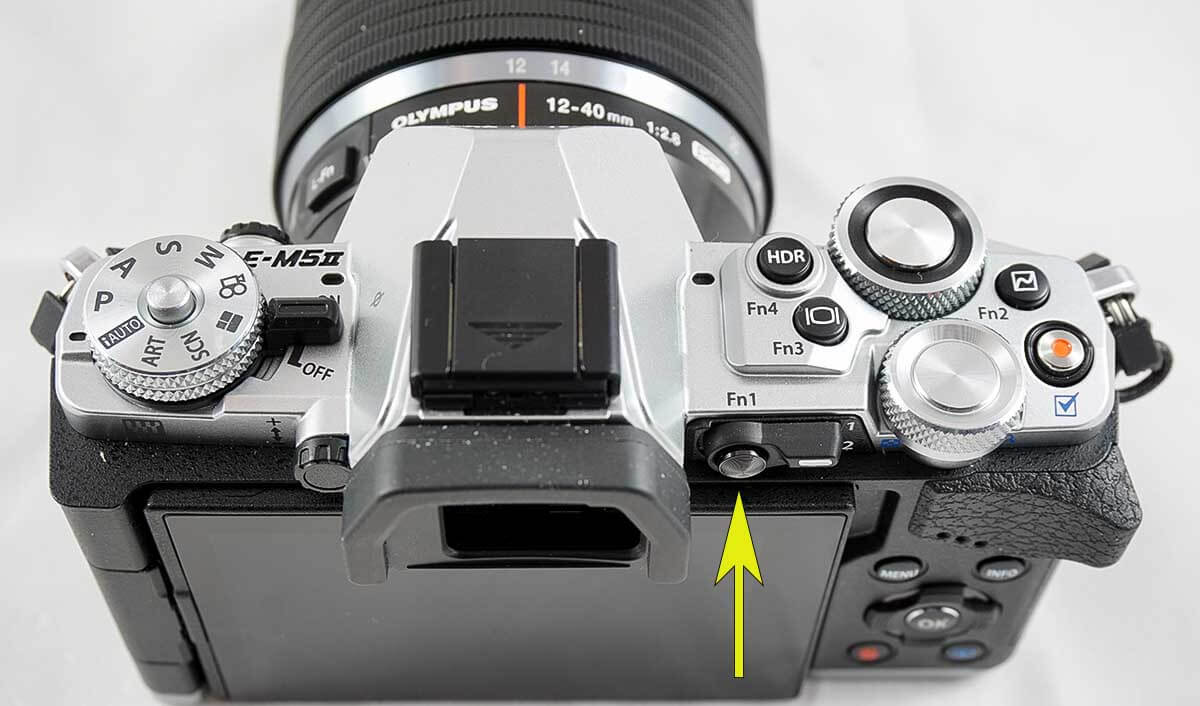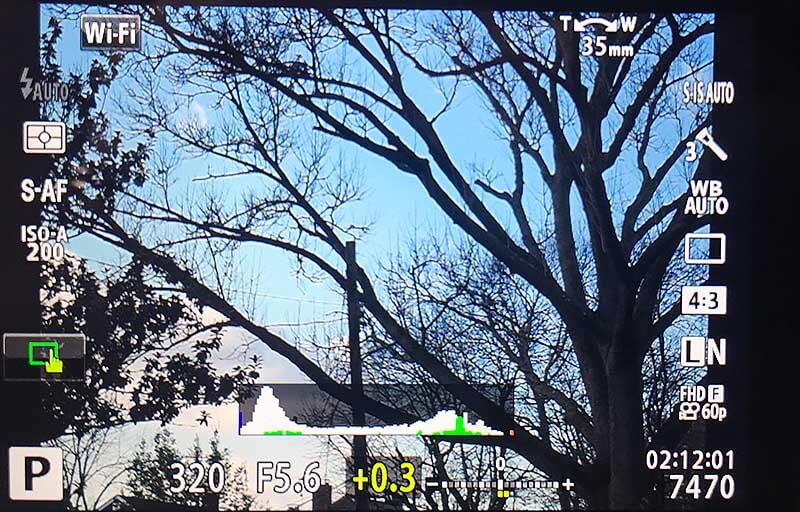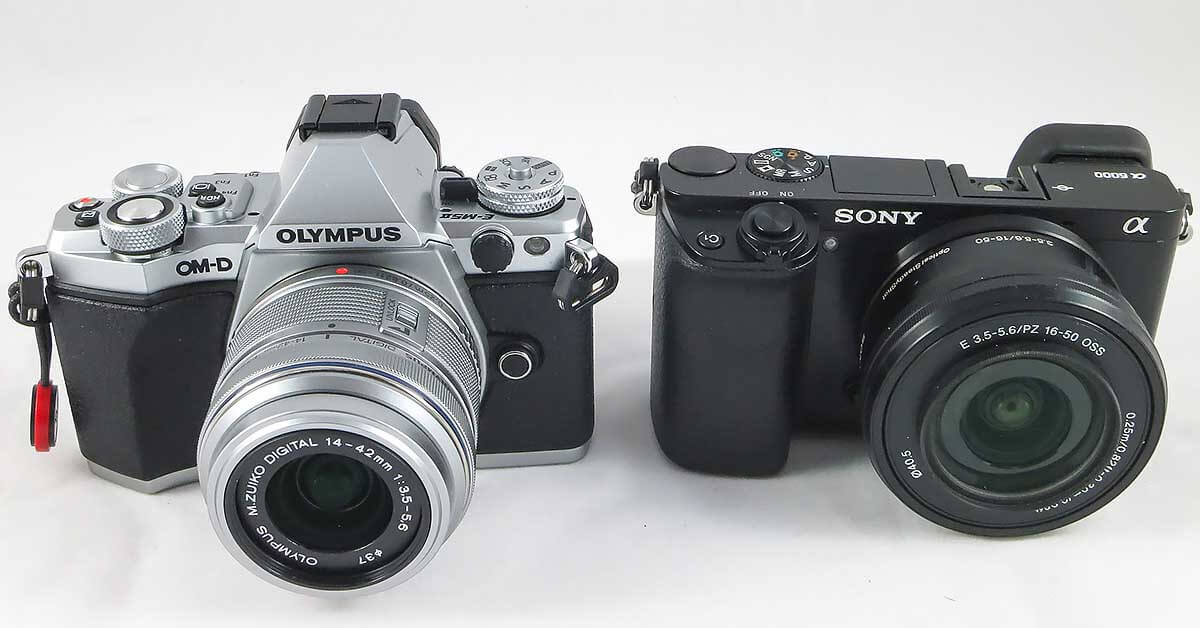Olympus OM-D EM-5 II Camera Review for backpacking & hiking
Superb zoom lenses & weather resistance set the Olympus OM-D EM-5 II apart as a great backpacking & hiking camera. With the EM-5 II you’ll continue taking great pictures in tough environmental conditions that would shut down other cameras. [Picture above is the environmentally sealed Olympus OM-D EM-5 II and 12-40 f/2.8 PRO lens working in the rain-shadow of hurricane Matthew.]
Note: This Olympus OM-D EM-5 II Camera Review focuses on how well it does as a backpacking and hiking camera. As such, this review criteria differs significantly from mainstream camera reviews like DP Review. See more on what makes a great backpacking camera…

[Photo taken on the Appalachian Trail in the rain-shadow of hurricane Matthew.] With the Olympus OM-D EM-5 II Camera you’ll continue taking pictures in tough environmental conditions that would have had other cameras stowed in your backpack hours ago.
Quick Specs – Olympus OM-D EM-5 II Camera Review
- The Olympus OM-D EM-5 II is a weather-sealed, 16 megapixel mirrorless u-4/3 (MFT) sensor camera
- It is smaller and lighter than APS-C, crop sensor cameras like the Nikon D7200 or Canon EOS 80D
- Highlights: weather-sealed; excellent zoom lenses (better than many primes); and its 5-axis, in-body image stabilization works with any lens
- Weights: 14.5 oz camera body only with battery
19 oz with 14-42 f/3.5-5.6 “kit” lens, 21.0 oz with 9-18 f4.0-5.6 lens; 29 oz with 12-40 f/2.8 PRO lens
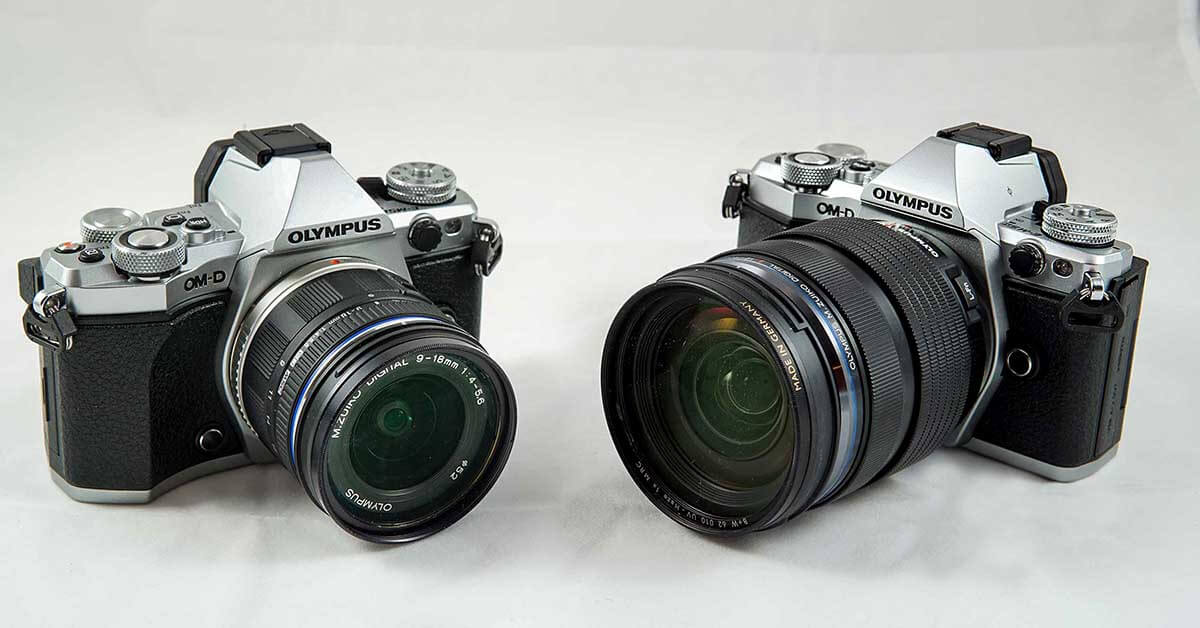
Light and sharp Olympus lenses are key to great image quality. Right is the weather and dust resistant 12-40mm F2.8 PRO. When combined with the also weather-resistant EM-5 II camera, you get a setup that can deal with tough environmental conditions. Left is the 9-18 9-18mm f4.0-5.6 lens with an exceptionally wide 18-36mm equivalent range. At only 5 oz and super compact, it’s an engineering marvel.
Contents of this Review (links to sections)
What’s Good about the Olympus OM-D EM-5 II
What’s Not so Good about the Olympus OM-D EM-5 II
Summary – Why the Olympus OM-D EM-5 II is an Excellent Backpacking Camera
Top 5 Criteria for a backpacking and hiking camera – how the Olympus OM-D EM-5 II does
Suggested Lenses for the Olympus OM-D EM-5 II
Tips for Using the Olympus OM-D EM-5 II
COMPARISON: Olympus OM-D EM-5 II vs. the Sony a6000 through a6500 Cameras
What’s Good about the Olympus OM-D EM-5 II
- Weather sealed – dust-resistant / splash-resistant
- Excellent zoom lenses exceeding the resolution of most prime (fixed focal length) lenses
- Olympus M.ZUIKO DIGITAL ED 12-40mm F2.8 PRO. Fast and weather sealed.
- Olympus M.ZUIKO DIGITAL ED 9-18 f4.0-5.6 lens. Exceptionally wide 18-36mm equivalent range. Light and compact!
- First-rate, 5-axis in-camera image stabilization works with any lens. This hugely expands the lens options for handheld shooting when backpacking.
- Fast focusing
- Excellent camera controls (2 knobs and many function buttons) allow you to make essential adjustments quickly and without having to take your eyes off the viewfinder
- Highly customizable to your shooting style = faster easier photo taking in the backcountry
- Bright large viewfinder with excellent information display options
- Fully articulated touchscreen display (great for tripod and video shots)
- Nice out-of-camera JPEG images (speeds post-trip workflow and publishing images)

Out of camera JPEG images are really nice and don’t require as much tweaking in a photo editor. This greatly speeds getting photos to publication—the single largest time consumer/bottleneck in the whole photographic production process. [Barn taken at the end of a long hike in the Blue Ridge Mountains of Virginia]
What’s Not so Good about the Olympus OM-D EM-5 II
- 16 MP vs 24 MP of competitive mirrorless APS-C cameras (but good Olympus zoom lenses close the resolution gap)
- High ISO performance ⅓ stop less than APS-C cameras from Sony, Nikon and Canon
- u4/3 sensor has slightly lower 5% color depth, and 8% dynamic range than best APS-C cameras like the Sony a6500
- Video is not class-leading (but it shoots solid 1080p with excellent image stabilization and focusing, with an articulated touch screen. This is likely the bread and butter for most backcountry video)
- Reading the manual and customizing the camera takes time. (But once done you’ll reap the benefits of fast access to your most used controls.)
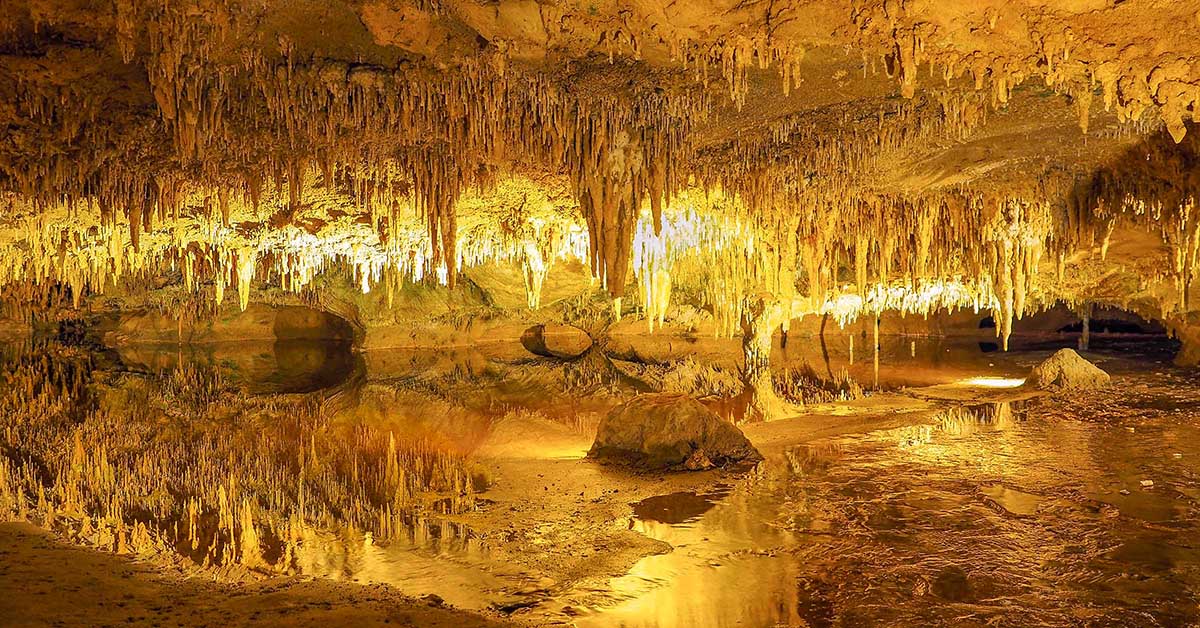
Handheld @1/6 sec and sharp: Literally shooting in a cave—Luray Caverns, VA. Olympus OM-D EM-5 II Camera with ED 12-40mm f/2.8 zoom lens. [1/6 sec, f/2.8, ISO 400] And the camera’s moisture resistance was great in the extremely damp cave.
Summary – Why the Olympus OM-D EM-5 II is an Excellent Backpacking Camera
To fully appreciate why the Olympus OM-D EM-5 II is an excellent backpacking camera you have to look at the camera, its excellent lenses and features as a whole. As such, it has an unbroken chain of elements to produce excellent final images, even shooting handheld in the challenging situations encountered backpacking. As you can see below, the camera does well in all of the Top 5 Criteria for a Backpacking Camera. [For a full explanation of these criteria see: 5 Most Important Features for a Backpacking Camera (clickable link)]
Top 5 Criteria for a backpacking camera – how the Olympus OM-D EM-5 II does
- It has a sharp, wide angle zoom lens.
Both the Olympus ED 12-40 f/2.8 PRO lens and the 9-18 f4.0-5.6 lens yield images approaching the maximum resolution of the camera’s sensor—better than most prime lenses. The 12-40 stands out for being weather sealed, and for having a large aperture (good for low light). The 9-18 is exceptionally wide for dramatic creative angles and taking in large landscapes.The extremely sharp dust/water resistant 7-14mm f/2.8 PRO Lens and 12-40mm F2.8 PRO lenses have manual focus activation by sliding the focus ring back. This exposes traditional focus setting marks.
- It takes sharp, high quality photos handheld. Especially in the dim light of dawn and dusk.
- The Olympus OM-D EM-5 II has excellent in-body stabilization that works for any lens (stabilized or not). This allows for the stabilized use of a vast array of u4/3 lenses. The 12-40mm F2.8 is quite fast for 13 oz zoom lens—great for low light performance.
- The camera has quick and accurate auto focusing. In addition, I use its excellent manual focus (with “focus assist”) to get focus exactly where I want it. Its touchscreen is particularly good when focusing and making adjustments when shooting from a tripod—and great for shooting video!
- Out of camera JPEG images are quite nice and don’t require as much tweaking in a photo editor. I had little reason to use RAW images.
- On the down side, since its micro-4/3 sensor is smaller, the EM-5’s high ISO performance is about ⅓ stop less than leading APS-C cameras.
- Essential controls are fast and easy to use. You can take a great photo in a few seconds and move on.
Two large, knurled control dials on the top of the camera due the bulk of the work. Once the program buttons where programmed, I could quickly adjust exposure, aperture, shutter speed, ISO setting, activate manual focus, manage DRO (digital range optimization) or “Shadow Adjust Mode,” timed shutter release, etc. I could adjust all of these in a matter of seconds without taking my eye off the viewfinder.You can control almost every setting from the top panel of the Olympus OM-D EM-5 II without having to dive into menus. Make sure you do a good job of programming the four Fn buttons to your needs. I usually have the Fn 1 button programmed to switch between Manual and Auto Focus.
- It has a bright viewfinder with all essential information displayed on one screen.
This is one of the brightest and nicest EVFs (electronic viewfinders) I’ve used. The swivel touch display is also great when operating off of a tripod or shooting video. There’s enough information available that you can shoot and make adjustments without taking your eyes of the EVF.
All essential information is in the display, including a histogram so you can get the exposure right before taking the photo. [Theres also a nice dual level mode to get your photo aligned.]
- Light and compact body with ruggedness and weather resistance a plus.
I’ve covered this in a fair amount of detail already. But to summarize, the Olympus OM-D EM-5 II has a rugged metal body. There is little plastic to get scratched or damaged. The EM-5 body is also dust/water resistant. Finally, there are two superb dust/water resistant zoom lenses for the EM-5. The combination of a both dust/water resistant body and lens is very attractive for windy/dusty/gritty desert environments, and damp rainy climates like the Pacific Northwest.
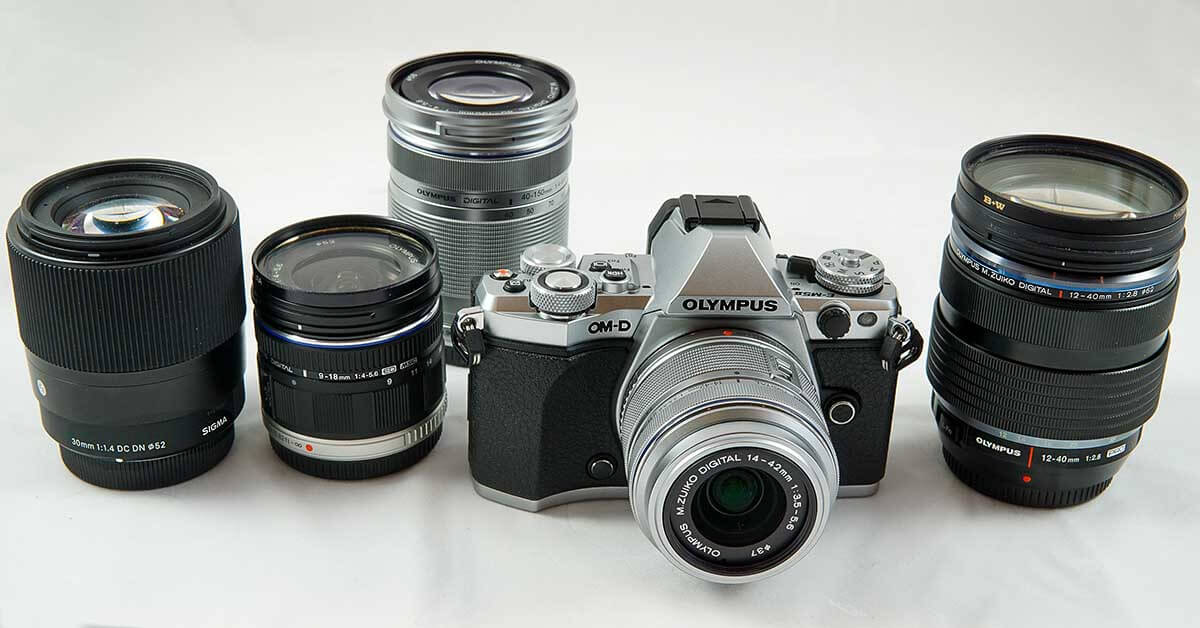
An example of a great lens system. From R to L: the very sharp environmentally sealed, 12-40mm f/2.8 PRO lens; on camera 14-42mm f/3.5-5.6 II R standard kit lens; 40-150mm f/4.0-5.6 R telephoto zoom; the compact, wide and sharp 9-18mm f4.0-5.6 lens weighing only 5 oz!; and far left is the sharpest lens of the bunch, the Sigma 30mm f/1.4 prime.
Suggested Lenses for the Olympus OM-D EM-5 II
Again, what sets the Olympus apart from many cameras is an excellent selection of lenses. But in particular, superb zoom lenses!
Moderate Price and Budget Lenses
- Olympus M.Zuiko Digital ED 14-42mm f/3.5-5.6 II R. Standard kit lens. Light, super compact, good if not exceptional image quality. Good value.
- Olympus M.Zuiko Digital ED 40-150mm f/4.0-5.6 R. Inexpensive, light and surprisingly good image quality. Good value.
- Sigma 30mm F1.4 DC DN C Micro 4/3. Very sharp. Between a long normal and short portrait lens.
- PANASONIC LUMIX G II Lens, 20mm, F1.7 ASPH. Exceptionally sharp normal lens.
Alert! Unless you really need a single lens solution that includes a long telephoto, I would shy away from the Olympus M.ZUIKO DIGITAL ED 14-150mm F4.0-5.6 II lens that is sometimes bundled with the camera. It’s expensive and has lower image quality than the combination of the 12-42 and 40-150 lenses above.
Higher Priced Lenses
- WR Olympus M.ZUIKO DIGITAL ED 12-40mm F2.8 PRO. Fast and weather sealed.
- Olympus M.ZUIKO DIGITAL ED 9-18mm f4.0-5.6. Exceptionally wide 18-36mm equivalent range. Light and compact!
- WR 7-14mm f/2.8 PRO Lens. A beast at 18.8 oz. but it’s fully rectilinear and at 7mm it’s the equivalent of a 14mm lens on a 35mm camera!
- Panasonic Leica Summilux DG 25mm F1.4. Exceptionally sharp and fast normal lens.
If you need/want more u4/3 lenses
Micro 4/3 is an open format also used by Panasonic, which along with Sigma (and a few others like Rokinon and Tamron) also makes some excellent lenses.
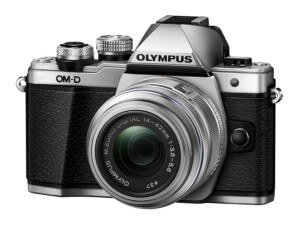 |
Also consider the less expensive, but non-weather resistant Olympus OM-D EM-10 II. Most of what is written about the Olympus OM-D EM-5 II is also true of OM-D EM-10 II. That makes the EM-10 II a tremendous value! Both cameras share the same image sensor, electronics and selection of great lenses. For a killer wide-angle backcountry setup for moderate cost and low weight, consider the EM-10 II paired with the compact, wide and very sharp ED 9-18mm f4.0-5.6 lens. This lens is exceptionally wide-angle (18-36mm equivalent) for dramatic perspectives and sweeping landscapes. Compact and only 5 ounces, it is a marvel of optical engineering. |
Tips for Using the Olympus OM-D EM-5 II
- For sharpest pictures shoot in Aperture Mode, “A” on the mode dial. Set it to the lens’ best aperture (usually around f/4 or f/5.6 for u4/3 lenses).
- Program the F1 function button to manual focus. One of the joys and strengths of mirrorless cameras is how quickly and well you can manually focus. With the F1 button you can switch between auto focus and manual in less than a second. (Or just use the manual focus clutch on the focus ring of the PRO lenses)
- Use the “Shadow Adjust Mode,” in bright daylight. It will take some of the contrasty sting out of your midday/full-sun photos. Expose for the highlights and let the camera auto-adjust to better expose the shadows.
- Use the nice histogram in the display. This will give you a good idea if you are losing shadows or blowing out highlights before you take the photo.
- Do take the time to customize the camera to make your most used features quickly accessible via the many function buttons on the camera, and even on some of the lenses. This may require downloading a PDF of the manual and doing some reading but you’ll thank yourself later.
Olympus OM-D EM-5 II vs. the Sony a6000 through a6500 Cameras
Speed and Ease of Use – advantage Olympus
The Olympus’ excellent camera controls (2 knurled top knobs and many function buttons) allow you to make essential adjustments quickly and without having to take your eyes off viewfinder. In comparison, some important Sony adjustments must be made in-menu or using the less than perfect camera back dial. In addition, the Olympus has a much larger and brighter EVF display. The Olympus has a better rear touchscreen display that both rotates and twists. The Sony a6000 and a6300 have non-touchscreen displays that only tilt. (The a6500 has a touchscreen display but it only tilts.)
Camera Sensor and Video – advantage Sony
The Sony 24 MP sensor when combined with the best prime lenses will out resolve the Olympus 16 MP sensor. In addition the larger Sony sensor has slightly better high ISO performance, color depth, and dynamic range. But Olympus wins the resolution battle for zoom lenses. The best Olympus u4/3 zoom lenses have slightly higher perceptual resolution of 10 MP vs. 8-9 MP for the best Sony zoom lenses. The Olympus is a solid but not exceptional video camera, while Sony cameras are killer video machines.
Zoom Lenses and Resolution – advantage Olympus
With their standard kit lenses ( Olympus 14-42 F4.0-5.6 II lens and Sony 16-50mm f/3.5-5.6 OSS) the perceptual resolution of the Sony and Olympus cameras are essentially equal at 6 MP. Even though the Sony has a 24 MP sensor vs. the Olympus 16 MP sensor. This is because the Olympus kit zoom is a higher resolution lens. But the Olympus OM-D EM-5 II has a clear advantage when you need a higher quality/higher resolution zoom lens. There are six u4/3 mount zoom lenses with perceptual resolution of 8-10 MP—at least two are weather resistant. These zoom lenses approach the 12 perceptual MP range of the best Sony E-mount prime lenses. (They even slightly beat the perceptual resolution of the bestSony zoom lenses!) In comparison, there are only three Sony E-mount lenses with perceptual resolution of 8-9 MP—none are weather resistant. These Sony E-mount zoom lenses are nowhere near reaching the 16 perceptual MP range of the best Sony E-mount prime lenses.
Prime (fixed) Lenses and Resolution – advantage Sony
Sony has the perceptual resolution advantage when it comes to prime (fixed focal length) lenses. There are six Sony E-mount prime lenses with perceptual resolution of 12-16 MP. In comparison, there are four u4/3 mount prime lenses with a perceptual resolution of 11-13 MP. This is mostly due to Sony’s larger 24 MP sensor.
Image Stabilization – advantage Olympus (with the exception of the Sony a6500)
Olympus has the advantage with its tried and true 5-axis in-camera image stabilization that works with any lens. This hugely expands lens options for handheld shooting when backpacking. Only the most recent Sony a6500 has camera image stabilization. But this is huge deal for Sony fans that hike and backpack (that is don’t use a tripod often).
Weight with Kit Lens – a draw (with the exception of the Sony a6000)
The Olympus OM-D EM-5 II is 19 oz with its 14-42 F4.0-5.6 II lens kit lens. But the comparable (weather sealed, in body stabilization) Sony camera, the a6500 is about an ounce heavier with its 16-50mm f/3.5-5.6 OSS kit lens. The Sony a 6000 is a svelte 16 oz and about 3 oz lighter than the Olympus.

